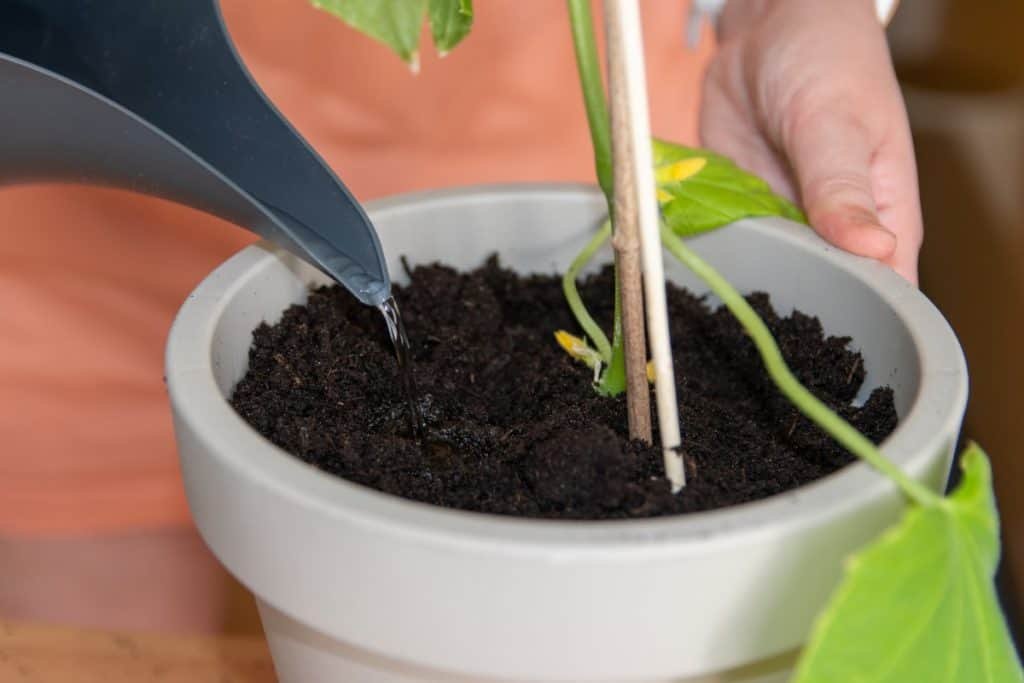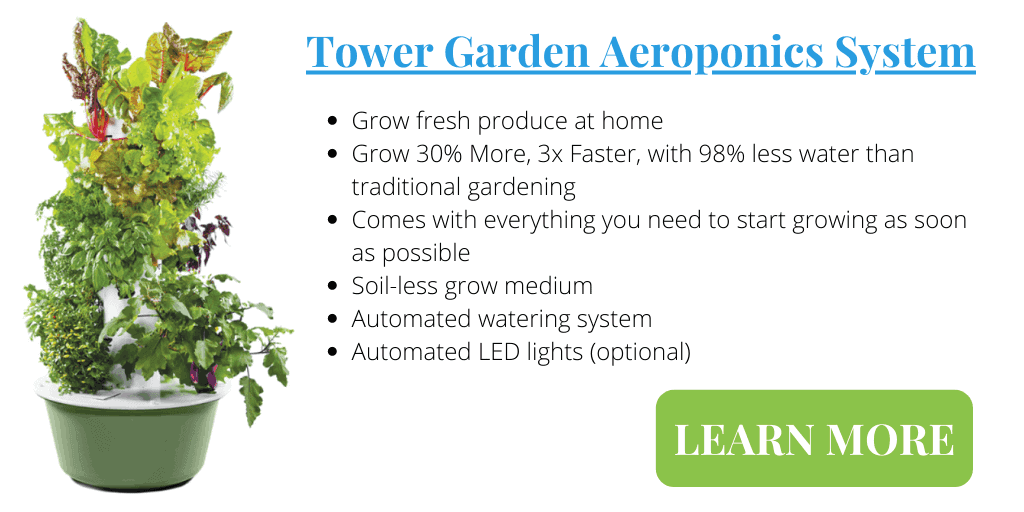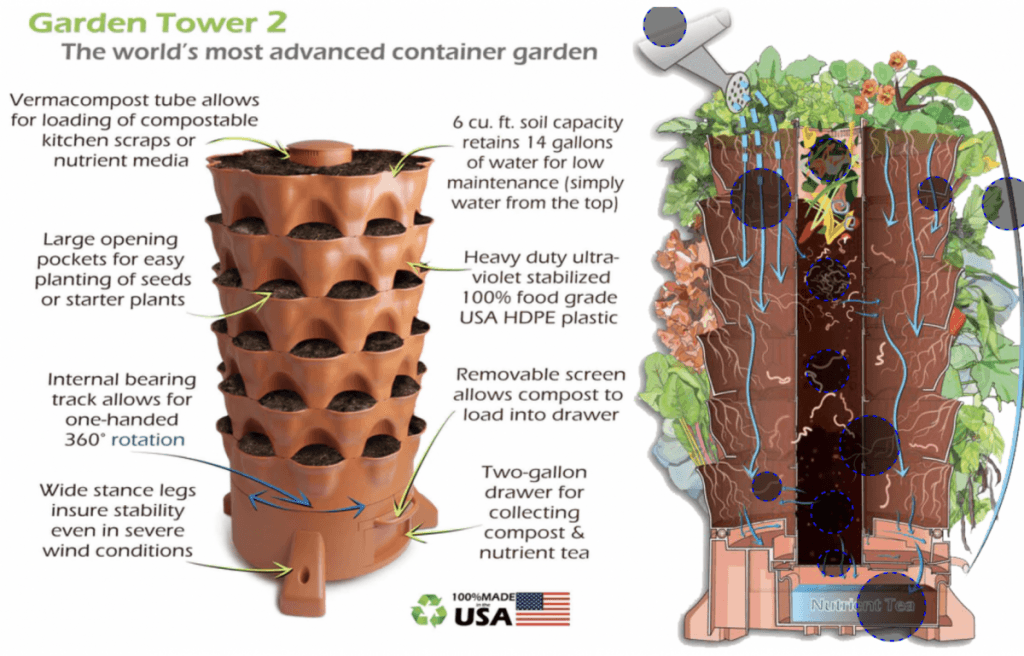When planning your indoor or outdoor gardens, it’s always a toss-up about what kinds of pots you should use and what would be best suited to grow in those pots. Plastic pots are an excellent go-to for planting container gardens or plants.
Plastic pots are suited to indoor and outdoor plants alike because of their excellent drainage and because plastic is so light, making it easy to shift them around. Vegetables, herbs, shrubs, annuals, perennials, and succulents each have several different species that do well in plastic pots.
Now that we know the kinds of plants that will do well in plastic pots, it would be good to look at a few examples of these plants to know which ones might suit your particular planting environment.

Growing Well In Plastic Pots
When you buy your plants or trees from the nursery, they almost always come in plastic pots. Nurseries sell their plants in plastic pots because these types of containers are strong while at the same time flexible, they are inexpensive, and they offer your plant excellent drainage. The nice thing about plastic pots is that if you don’t like their look or style, you can always place them inside a prettier or more appealing pot, making them more aesthetically pleasing.
When it comes to indoor plants, plastic pots are a perfect choice because they offer large holes that support good drainage, and this is a necessity for plants grown indoors. Plastic pots are also a good choice for outdoor plants as they are lighter than most other pot materials. This lightness makes moving your outdoor container plants much more manageable.
Nearly any vegetable, herb, shrub, flower, or small tree will grow successfully in a plastic pot. When deciding which plants to grow, make sure you choose ones that will suit your climate and the amount of shade or sun the container will receive. Compact and dwarf cultivars are often the best choice, especially if you plant them in a smaller container.
Find out more about starting a vertical garden at home to grow more flowers and food in a small space.
- SIZE: 40-1/2" L x 15-1/2" W x 31-1/2" H overall, planting box: 37-1/2" L x 15-1/2" W x 8" deep,...
- ERGONOMIC: Elevated raised planter box with legs eliminates the need to bend over, making...
- METAL: Made of stable galvanized steel raised garden bed with anti-rusty grey coating, not made...
High Density Poly Ethylene HDPE
HDPE is a food safe plastic that does not leach any harmful chemicals into the soil of potted plants. This is important for growing fruits vegetables and herbs that you intend to eat. Using a UV stabilized HDPE for outdoor growing is recommended when your pot has full UV exposure, your pot will last longer and will not degrade in the sun.
Here is some information on growing plants in PVC .
I grow a lot of my herbs vegetables and strawberries using the Tower Garden vertical aeroponic system. It can hold more than 20 plants and is makes growing easy by using an automatic timer and pump to ensure the plants get all the nutrients they need.
Find out what is a Tower Garden and how does it work.

Herbs And Vegetables
Vegetables can be grown together or individually in plastic pots, from smaller containers to 5-gallon plastic buckets or half barrels. The largest plastic pot types can accommodate multiple smaller vegetables or a single tomato plant. You can even mix your containers up by planting a salad garden with your favorite salad ingredients or a pizza garden with your favorite pizza herbs.
Although most vegetables can be grown in plastic pots, the following is a list of a few vegetables that grow well in plastic pots.
- Broccoli – Full sun, hardiness zones 2 – 11
- Cabbage – Full sun, hardiness zones 2 – 11
- Lettuce and salad greens – Full sun or partial shade, hardiness zones 2 – 11
- Peas – Full sun or partial shade, hardiness zones 3 – 8
- Potatoes – Full sun, hardiness zones when grown as an annual – 3 – 10
- Bush or Dwarf tomato plants – Full sun, when grown as annuals they are happy in all hardiness zones
- Peppers – Full sun, when grown as annuals, you can grow them in all hardiness zones
The following list gives examples of a selection of herbs that you can grow in plastic pots.
- Chives – Light shade to full sun, hardiness zones 3 – 9
- Parsley – Full sun, hardiness zones 2 – 11
- Basil – Full sun, hardiness zones 10 – 11 if grown as perennials; if grown as annuals, you can plant them anywhere
Annuals
If you are looking to brighten up a space by planting something in your plastic pot that will stay attractive all summer, you should plant summer-blooming annuals or annuals with foliage that will remain attractive. Annuals only last for one year and are good choices for your plastic pots. Many of them grow well in containers, and having annuals around means that you can change things up every year.
The following is a list of annuals that will do well in plastic pots.
- Geraniums (Geranium spp.) – Partial shade to full sun, hardiness zones 3 – 9
- Marigolds – (Tagetes spp.) – Full sun, hardiness zones 2 – 11
- Wax Begonias (Begonia semperflorens) – Partial shade to full sun, hardiness zones anywhere
- Coleus (Plectranthus scutellarioides) – Partial shade to full sun, hardiness zones anywhere
- Petunias (Petunia spp.) – Full sun, hardiness zones 10 – 11
- Impatiens (Impatiens spp.) – Full sun to partial shade, can be grown as an annual in most hardiness zones
- Cosmos (Cosmos sulphureus) – Full sun, hardiness zones 2 – 11
- Lobelia (Lobelia erinus) – Partial shade to full sun, this plant can be grown as an annual in most hardiness zones
Using a self fertilizing composting planter will make your greens, herbs and veggies grow faster and have a higher nutrition value. The Garden Tower 2 is a planter that recycles your kitchen scraps back into a healthy harvest at home. The all in one garden and composting tower can also provide high nutrient fertilizer for your other garden beds and plant pots.

Perennials
Perennials will come back year after year, brightening up your plastic pots. You can plant them singularly or in multiples depending on your pot size. Although multiple perennial plants do well in plastic pots, the following list is only a selection of those.
- Hostas (Hosta spp.) – partial shade to full shade, hardiness zones 3 – 9
- Daylilies (Hemerocallis spp.) – Full sun to dappled shade, hardiness zones 3 – 10
- Sedum (Sedum) – partial shade to full sun, hardiness zones 3 – 10
- Lungwort (Pulmonaria spp.) – Partial shade to full sun, hardiness zones 3 – 8
- Lavender (Lavandula spp.) – Full sun, hardiness zones 5a – 9a
- Coral Bells (Heuchera) – partial shade to full sun, hardiness zones 4 – 8
- Tickseed (Coreopsis spp.) – Full sun, hardiness zones 2 – 11
- Bergenia (Bergenia cordifolia) – Partial shade to full sun, hardiness zones 4 – 8
Shrubs
Most shrubs will do well in plastic pots. Here is a list of a selection of those shrubs.
- Roses – Choose the correct type of rose; the four best would be the ground cover variants, the miniature variants, the patio, and the polyantha variants
- Hydrangeas (Hydrangea spp) – Full sun, hardiness zones 5 – 9
- Yew Pine (Podocarpus macrophyllus) – Lots of bright light indoors and from shade to full sunlight outdoors, hardiness zones 8 – 11
- Boxwood (Buxus spp.) – Partial shade to full sun, hardiness zones 5 – 9 depending on the species
- Varigated Red Twig Dogwood (Cornus servicea) – Partial shade to full sun, hardiness zones 3 – 8
- Blue-Star Juniper (Juniperus squamata) – Full sun, hardiness zones 4 – 8
- Emerald Arborvitae (Thuju occidentalis) – Partial shade to full sun, hardiness zones 2 – 7
- Dwarf Alberta Spruce (Picea glauca) – Full sun, hardiness zones 3 – 8
Succulents
Most succulents will do well in plastic pots, be aware when you are planting your succulent container garden that some of your choices might vary in their sunlight preferences.
Conclusion
Most plants can do well when grown in plastic pots. Plastic pots are a suitable type of container to grow your plants in because they typically have excellent drainage holes, are lightweight, and are flexible. The above article listed several different vegetables, herb, annual, perennial, and shrub variants that happily grow in plastic pots.

